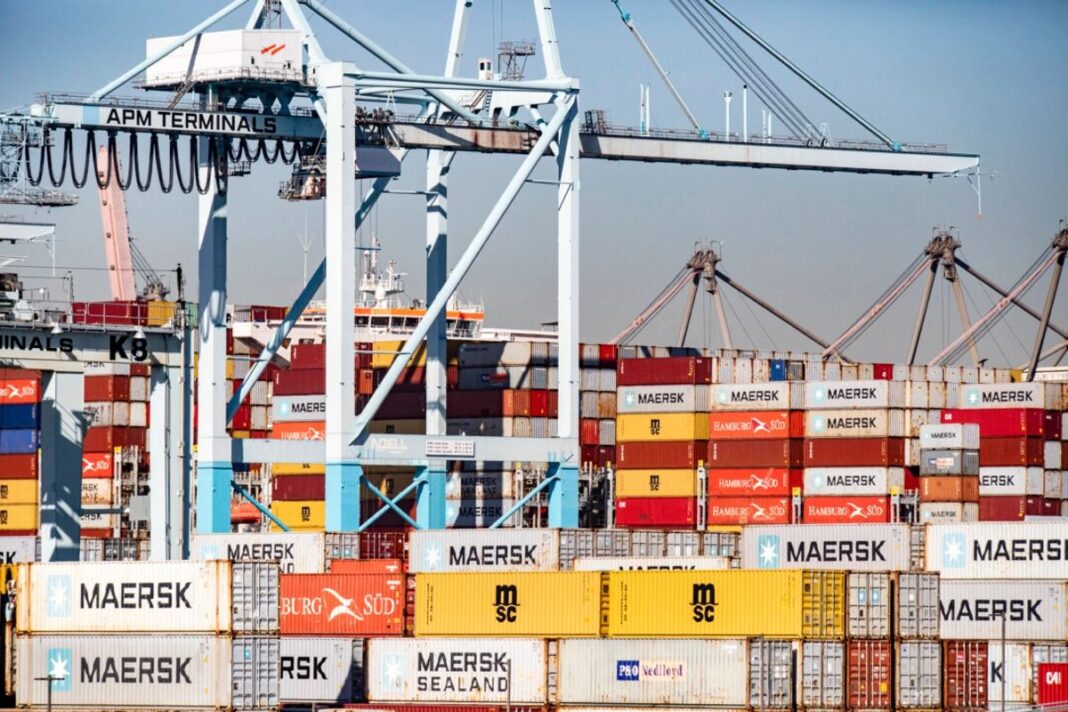Early forecasts signal a spike in second-quarter GDP growth.
The U.S. goods trade deficit declined sharply in April from a record in March as the effects of front-running President Donald Trump’s tariffs faded.
According to an advance estimate from the Census Bureau, the goods trade gap plummeted 46 percent, to $87.6 billion, from the all-time high of $162.25 billion registered in March. This represented the smallest trade deficit for goods since December 2023.
While economists had anticipated a substantial slowdown, last month’s reading came in better than the consensus forecast of $141.5 billion.
Goods imports tumbled 19.8 percent, or $68.4 billion, to $276.1 billion. Exports of goods rose by 3.4 percent, or $6.3 billion, to $188.5 billion.
Advance retail and wholesale inventories were virtually unchanged at $803.5 billion and $906.9 billion, respectively.
Leading up to the president’s sweeping global tariff plans on April 2, companies had rushed to stockpile consumer goods to avoid the anticipated levies.
Declining imports are expected to bolster the GDP growth rate in the current quarter. Imports are subtracted from the GDP calculations because they measure the value of goods and services produced domestically.
Early forecasts suggest that the U.S. economy may experience a rebound in the second quarter.
The Federal Reserve Bank of Atlanta’s widely watched GDPNow Model points to a 3.7 percent expansion in the April–June period. This is up from the regional central bank’s 2.2 percent estimate prior to the publication of the goods trade deficit.
In the first quarter, the U.S. economy contracted by 0.2 percent—the reading was revised upward by a hair from the initial estimate of negative 0.3 percent—primarily driven by soaring imports and a modest decline in government spending.
In addition to U.S. businesses perhaps temporarily pulling back on their spending, individuals also tempered their consumption.
According to the Bureau of Economic Analysis, personal spending rose 0.2 percent in April, down from the 0.7 percent increase in the previous month.
Personal income, however, surged at a pace that was significantly better than expected, at 0.8 percent.
The data do not signal an economy on the brink of disaster, but the numbers illustrate how tariffs can facilitate specific patterns, says Joseph Brusuelas, the chief economist and principal at RSM.
“It is an example of how the threat of higher tariffs dramatically affects spending by businesses, first in the front-running of purchases to avoid higher costs, and then in the pullback once inventories are built up,” said Brusuelas in a May 30 note.
“This data only adds to the uncertainty around the economic outlook at a time when trade policy changes on an almost daily basis.”
By Andrew Moran








